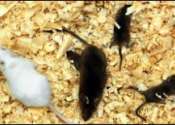Compounds from periwinkle plant could become more effective cancer drugs
Humans have long taken advantage of the huge variety of medicinal compounds produced by plants. Now MIT chemists have found a new way to expand plants' pharmaceutical repertoire by genetically engineering them to produce ...






